
Nereis is a genus of polychaete worms in the family Nereididae. It comprises many species, most of which are marine. Nereis possess setae and parapodia for locomotion and gas exchange. They may have two types of setae, which are found on the parapodia. Acicular setae provide support. Locomotor setae are for crawling, and are the bristles that are visible on the exterior of the Polychaeta. They are cylindrical in shape, found not only in sandy areas, and they are adapted to burrow. They often cling to seagrass (posidonia) or other grass on rocks and sometimes gather in large groups.
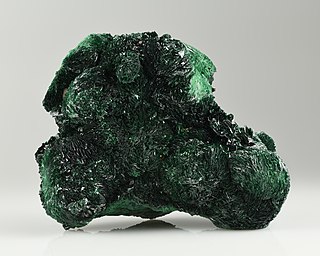
Atacamite is a copper halide mineral: a copper(II) chloride hydroxide with formula Cu2Cl(OH)3. It was first described for deposits in the Atacama Desert of Chile in 1802 by Dmitri de Gallitzin. The Atacama Desert is also the namesake of the mineral.
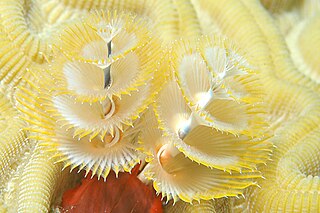
Spirobranchus is a small genus of tube-building annelid fanworms in the family Serpulidae.

Nephtys is a genus of marine catworms. Some species are halotolerant to a degree in that they can survive in estuaries and estuarine lagoons down to a salinity of 20 psu.
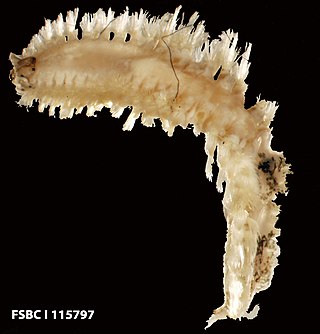
Harmothoe is a genus of marine Polychaete worms belonging to the family Polynoidae. Species of Harmothoe are found world-wide to depths of at least 5,000 m but are more common in shallower water.

Eunice is a genus in the polychaete family Eunicidae. Individuals grow to a length of between 0.5 and 300 cm. Their bodies have multiple segments. They have two eyes and five tentacles. They have well-developed sense organs and relatively large brains. Their color is dark purple-brown to red-brown with a white ring at the fourth segment. They are found in oceans and seas around the world. They have an evertible proboscis with distinctive mouthparts, some of which comprise two rows of maxilliary plates in a radula-like fashion.
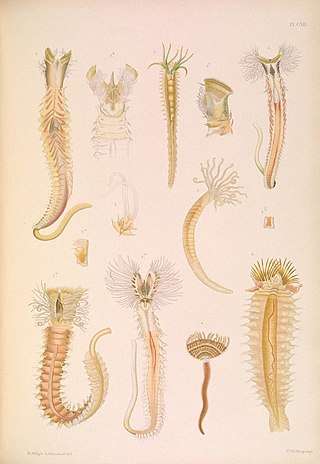
Ampharetinae are a subfamily of terebellid "bristle worm". They are the largest subfamily of the Ampharetidae, of which they contain the great majority of the described genera.

Phyllodoce is a genus of polychaete worms, which contains about 200 species. The prostomium bears eyes, two pairs of antennae and a pair of large retractile nuchal organs. The eversible proboscis is clearly divided into two parts.

Diopatra is a genus of polychaete worms in the family Onuphidae.

Amphinomidae, also known as the fireworms, bristle worms or sea mice, are a family of marine polychaetes, many species of which bear chaetae mineralized with carbonate. The best-known amphinomids are the fireworms, which can cause great pain if their toxin-coated chaetae are touched or trodden on. Their relationship to other polychaete groups is somewhat poorly resolved.
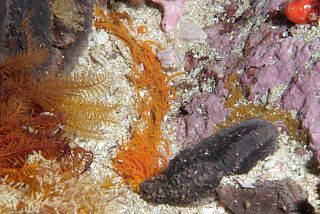
Cirriformia is a genus of marine polychaete worms in the family Cirratulidae.

Eulalia is a genus of polychaete worms.

Syllidae, commonly known as the necklace worms, is a family of small to medium-sized polychaete worms. Syllids are distinguished from other polychaetes by the presence of a muscular region of the anterior digestive tract known as the proventricle.

Lepidasthenia is a genus of marine Polychaete worms belonging to the family Polynoidae. Species of Lepidasthenia are found worldwide to depths of about 1200 m but are more common in shallower water.

Eunoe is a genus of marine annelids in the family Polynoidae. The genus includes 48 species which are found world-wide, mostly from depths of 50 m or more.
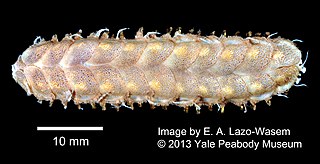
Lepidonotus is a genus of marine annelids in the family Polynoidae. The genus occurs globally and includes 80 species, usually found in shallow waters down to about 80 metres.
Aglaophamus is a genus of free-burrowing nephtyid worms.

Cirratulus is a genus of annelids belonging to the family Cirratulidae.
Lumbrineris is a genus of polychaetes belonging to the family Lumbrineridae.
"Fishing for Allergens: Bloodworm-Induced Asthma" study at the Allergy, Asthma & Clinical Immunology (AACI) site [1]

















